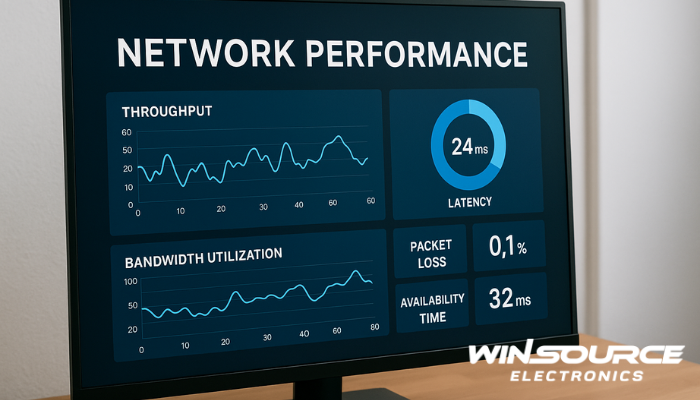
* Question
What is network performance?
* Answer
Network performance refers to the overall effectiveness, quality, and efficiency of a computer network in transmitting data between devices, applications, or systems.
It measures how well a network meets its intended goals in terms of speed, reliability, availability, and responsiveness.
1. Definition
In technical terms, network performance describes the quantitative and qualitative characteristics of data communication across a network — how fast, how reliably, and how consistently information moves from one point to another.
It is a key factor in determining user experience, system efficiency, and network capacity planning.
2. Core Performance Metrics
Metric | Description | Typical Measurement |
Bandwidth (Throughput) | The maximum or actual rate of data transfer over a network connection. | Bits per second (bps, Mbps, Gbps) |
Latency | The time delay between sending and receiving data. | Milliseconds (ms) |
Jitter | The variation in latency over time, affecting real-time traffic like voice or video. | Milliseconds (ms) |
Packet Loss | The percentage of data packets lost during transmission. | Percentage (%) |
Error Rate | Frequency of data corruption or retransmission due to noise or interference. | Ratio or % |
Availability / Uptime | The proportion of time a network is operational and accessible. | % or hours per year |
Utilization | The percentage of network capacity currently being used. | % |
3. Factors Affecting Network Performance
Several factors influence network performance, including:
Network topology and design (e.g., star, mesh, ring)
Transmission medium (wired, fiber, wireless)
Hardware capacity (routers, switches, NICs)
Traffic load and congestion levels
Protocol efficiency (TCP/IP, UDP, etc.)
Quality of Service (QoS) configurations
Environmental factors (interference, signal loss, latency over distance)
4. How Network Performance Is Evaluated
Network performance can be evaluated using:
Network monitoring tools (e.g., Wireshark, SolarWinds, PRTG)
Performance benchmarks and stress tests
Service Level Agreements (SLAs) that define acceptable metrics for latency, throughput, and uptime
End-user experience assessments (e.g., page load time, VoIP call clarity, streaming smoothness)
5. Importance of Network Performance
High network performance is essential for:
Reliable data communication in critical systems (e.g., healthcare, finance)
Efficient business operations and cloud-based workflows
User satisfaction in web and mobile applications
Scalability to support growing data traffic and connected devices
Poor performance leads to slow response times, dropped connections, and reduced productivity.
Summary
Network performance is a measure of how efficiently a network transports data, determined by metrics like bandwidth, latency, jitter, and packet loss.
Monitoring and optimizing these parameters ensures stable, fast, and reliable communication across devices and applications.

COMMENTS